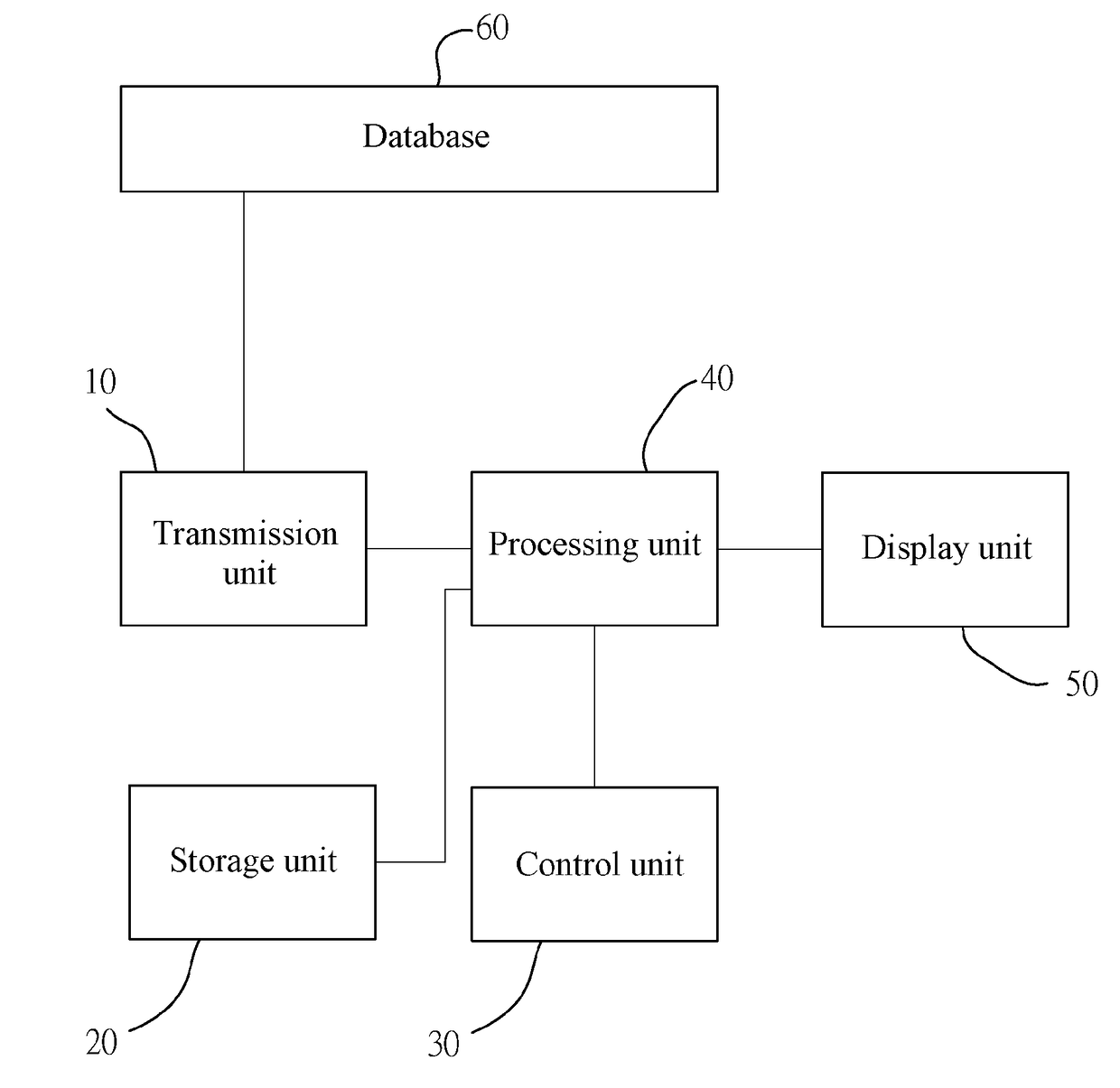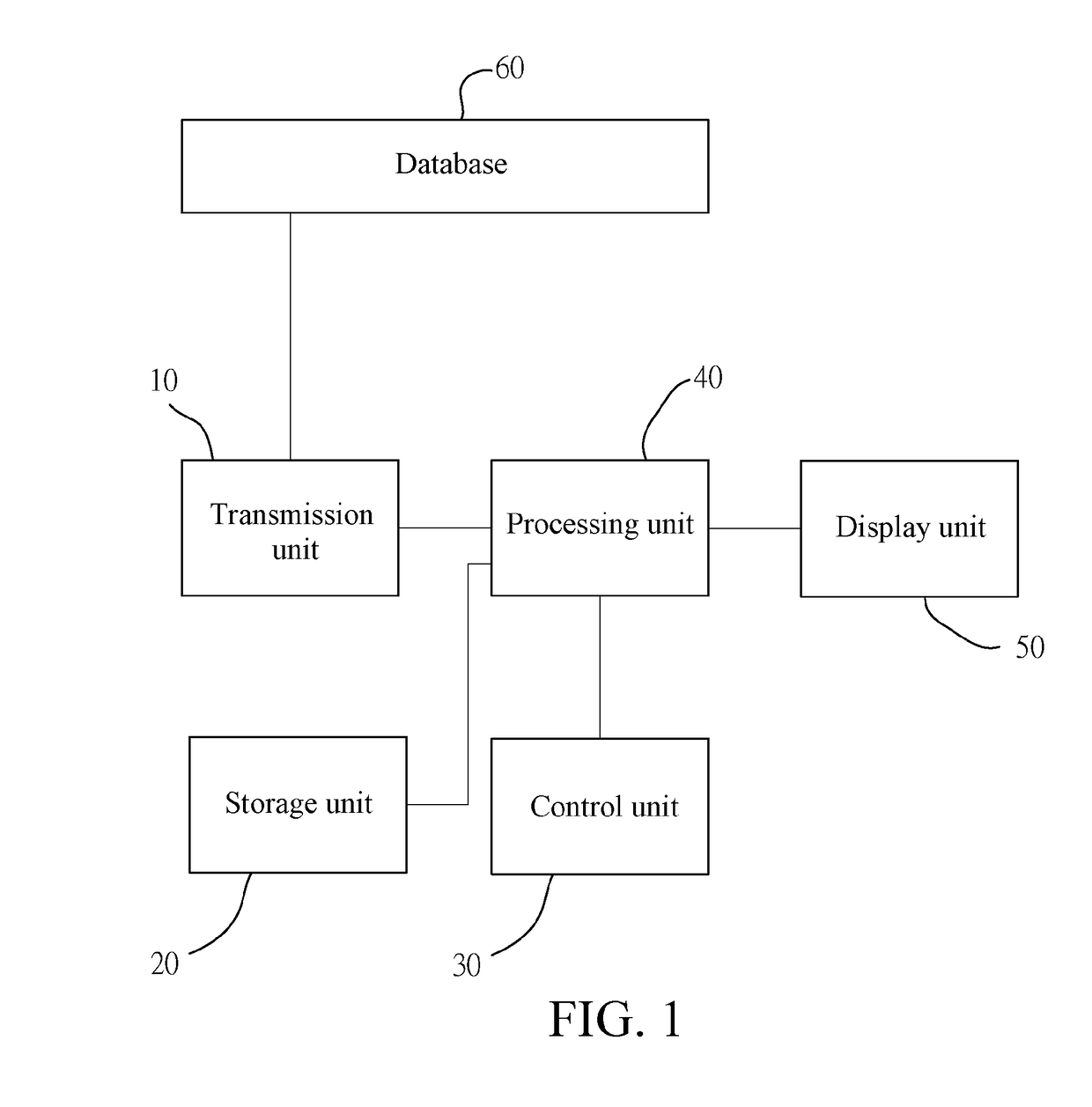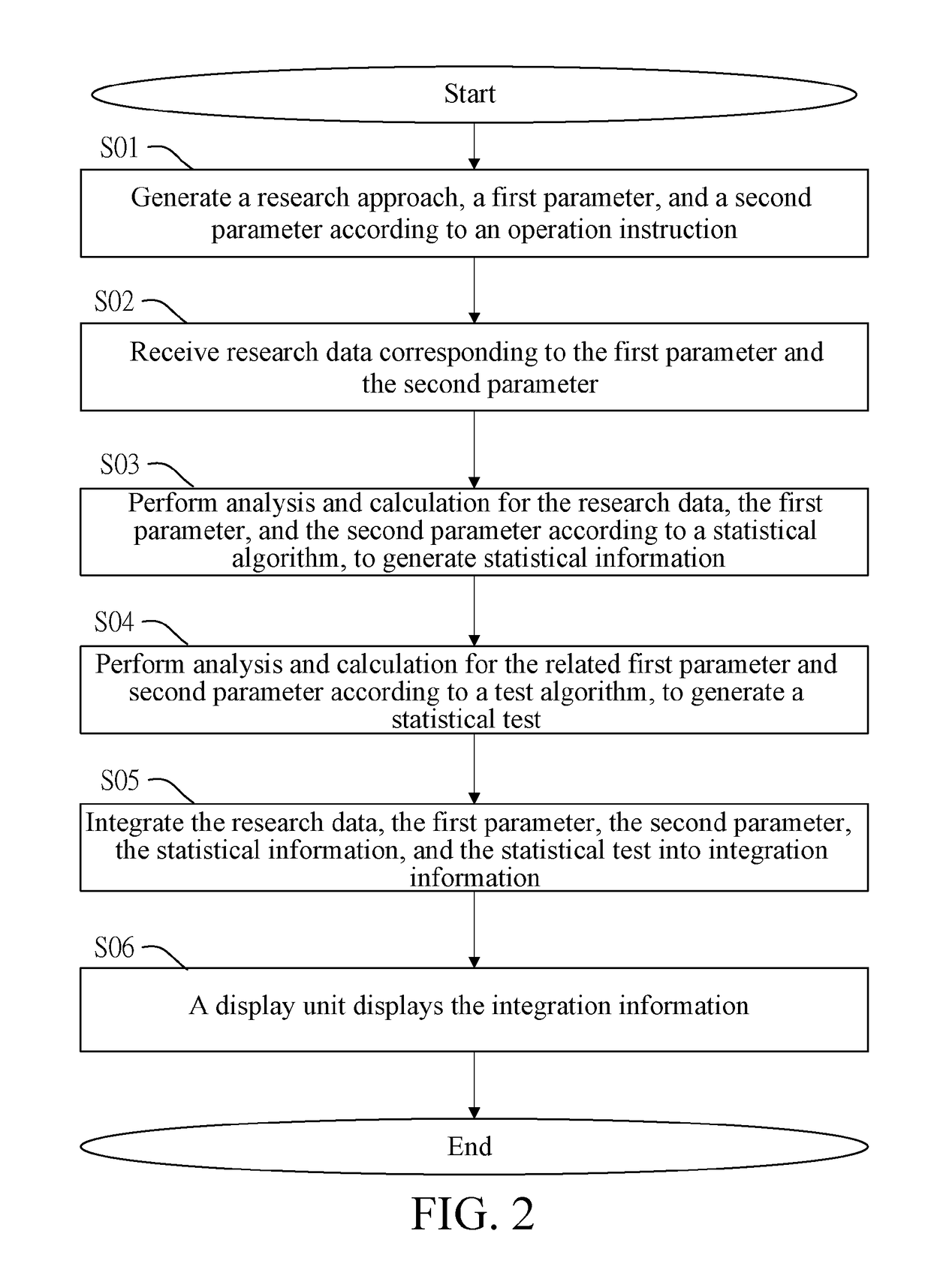Data analysis system and analysis method therefor
- Summary
- Abstract
- Description
- Claims
- Application Information
AI Technical Summary
Benefits of technology
Problems solved by technology
Method used
Image
Examples
first embodiment
[0036]In a first embodiment, the researcher is intended to research whether occupational exposure to styrene increases a risk of developing leukemia. First, 70,000 employees in 1,000 small and mid-size entities in 1990 to 2012 as research objects (to-be-analyzed data) are already stored in the database 60. Therefore, the researcher (that is, the user) can operate the control unit 30 to select the first research approach, and select the first parameter as whether an employee is occupationally exposed to styrene, and select the second parameter as whether an employee is a patient with leukemia (that is, step S01).
TABLE 1Relative secondSecond parameterparameter (no(leukemia)leukemia)TotalFirst parameter12029,88030,000(occupational exposureto styrene)Relative first parameter8039,92040,000(no occupationalexposure to styrene)Total20069,80070,000
[0037]Table 1 is a statistical table of the first research approach in the first embodiment. Referring to Table 1, the processing unit 40 receives...
second embodiment
[0064]Table 10 is a descriptive and inferential statistical table corresponding to the second research approach in the The processing unit 40 separately performs analysis according to a test algorithm, to obtain statistical tests that separately correspond to the second parameter and that are in the first research data and the second research data. That is, based on the statistical tests obtained by the processing unit 40 by performing analysis and calculation by using the test algorithm, relevance between the first research data and the second research data corresponding to the second parameter can be derived.
TABLE 10Case number (%)Case studyControl groupgroup(no(leukemia)leukemia)p-Item(n = 200)(n = 500)valueGenderMale99(49.5)200 (40.0)0.11 aFemale101(50.5)300 (60.0)Age42.51 ± 8.6338.38 ± 10.550.04 bM ± SDHabit ofYes95(47.5)230 (46.0)0.03 acigaretteNo105(52.5)270 (54.0)smokingHabit ofGroup of high90(45.0)180 (36.0)0.09 aalcoholalcoholdrinkingconsumptionGroup of low110(55.0)320 (6...
third embodiment
[0072]Table 12 is a statistical table related to the third research data in the third research approach in the Referring to Table 12, in the third research data, during observation for 23 years (a research period starts from 1990, and tracking is performed until 2012), if a research case is diagnosed with leukemia, it is considered that an event occurs; otherwise, if the disease is not detected until the end of 2012, it is considered that an event does not occur.
TABLE 12Case studyControlgroupgroupPerson-(leukemia)(no leukemia)TotalyearExposure to styrene13022035020,000(occupationalexposure tostyrene)No exposure to styrene7028035022,000(no occupationalexposure tostyrene)Total20050070042,000
[0073]According to the third research data, the processing unit 40 can obtain through calculation according to a statistical algorithm (such as the occurrence rate algorithm) that a leukemia occurrence rate=(200 / 700)×1000% o=285.71‰ (that is, step S03), indicating that among every thousand persons...
PUM
 Login to View More
Login to View More Abstract
Description
Claims
Application Information
 Login to View More
Login to View More - R&D
- Intellectual Property
- Life Sciences
- Materials
- Tech Scout
- Unparalleled Data Quality
- Higher Quality Content
- 60% Fewer Hallucinations
Browse by: Latest US Patents, China's latest patents, Technical Efficacy Thesaurus, Application Domain, Technology Topic, Popular Technical Reports.
© 2025 PatSnap. All rights reserved.Legal|Privacy policy|Modern Slavery Act Transparency Statement|Sitemap|About US| Contact US: help@patsnap.com



